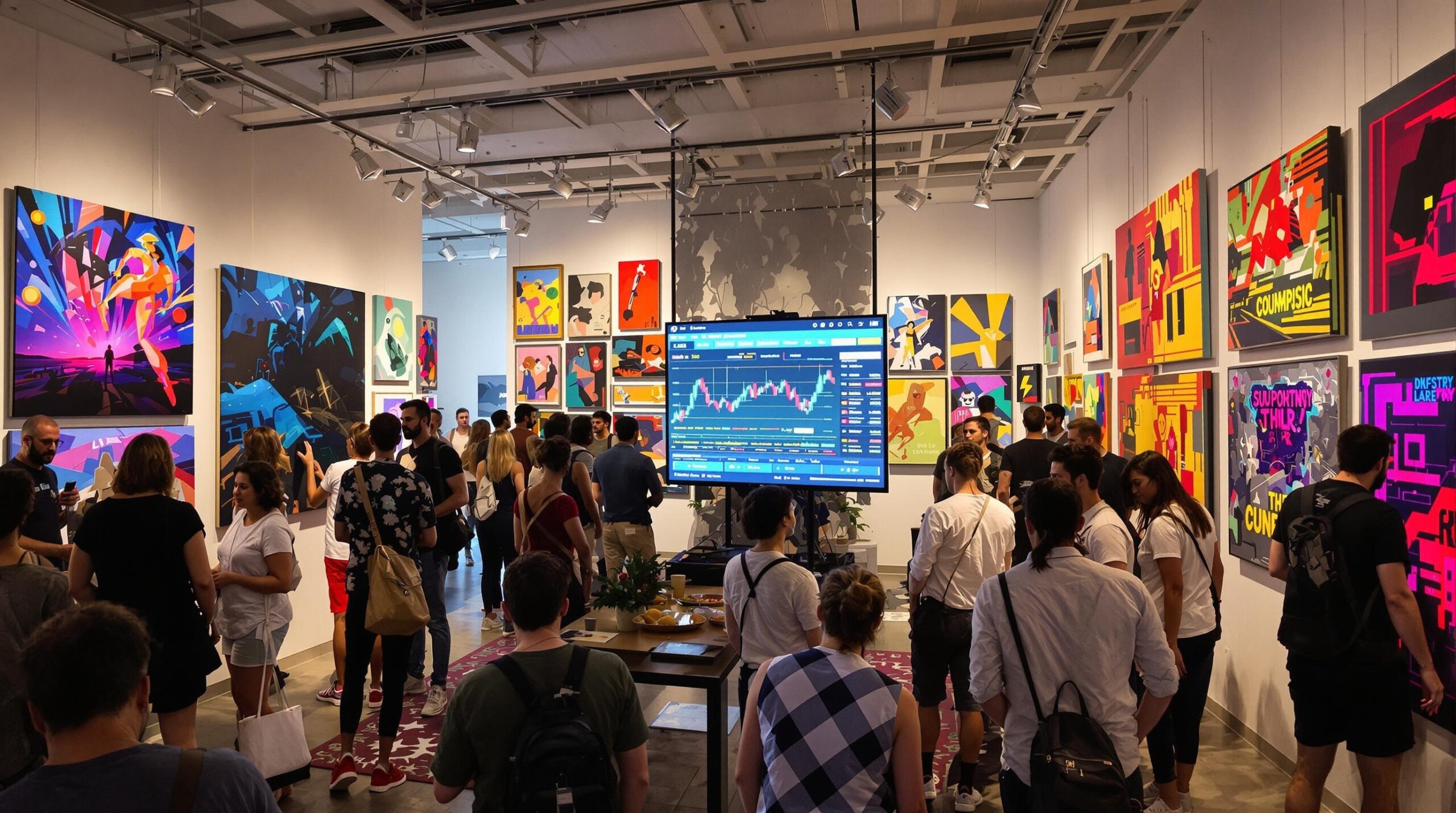The emergence of cryptocurrencies has significantly altered various industries, including the modern art market. Over the past decade, digital currencies have expanded their influence beyond finance, driving innovation in how art is bought, sold, and created. As the art market evolves, cryptocurrencies become indispensable tools for artists, collectors, and galleries.
Growth of Cryptocurrency in Art Transactions
Cryptocurrencies have introduced new possibilities for transaction efficiency and security in art. Traditionally, art transactions are complicated by high fees, intermediaries, and lengthy processes. Cryptocurrencies offer a decentralized system, reducing transaction times and costs. Bitcoin and Ethereum are popular choices, facilitating quick, secure purchases and sales.
The removal of complex financial gatekeepers has democratized access to art markets. Aspiring collectors who once faced barriers now participate more easily. Cryptocurrencies enable seamless cross-border transactions, with some galleries accepting digital currencies to attract a global clientele. This openness fosters greater diversity in the modern art collecting field.
Enhancing Transparency and Authenticity
Cryptocurrencies promote transparency and authenticity in the art market through blockchain technology. A blockchain is a decentralized ledger recording all transactions chronologically and publicly. This technology enhances trust, providing buyers with proof of authenticity and ownership history of artworks. Concerns about provenance and forgery decrease when records are immutably documented on a blockchain.
Artists and collectors benefit by connecting directly and establishing trust without third-party involvement. This approach streamlines the sales process, directly connecting creators with buyers and minimizing fraud risks. As the modern art market grows more complex, blockchain technology addresses the need for clear, reliable information.
Revolutionizing Art Creation and Ownership
Cryptocurrencies have also contributed to new art creation and ownership forms, notably through Non-Fungible Tokens (NFTs). NFTs represent unique digital assets on a blockchain uniquely suited to digital art. Artists can now more effectively sell, trade, and secure their creations.
NFTs empower artists by providing new revenue streams and ensuring creators maintain control over their work’s digital sales. Unlike traditional art, digital art’s ownership and provenance are effortlessly traced through NFTs. This protection encourages innovation in digital art, attracting artists previously reluctant to engage in the digital realm.
Collectors find value in NFTs as they represent digital art ownership and identifiable status symbols. Furthermore, the ability to trade NFTs on various platforms introduces liquidity, appealing to investors seeking high returns. This integration of art and investment reshapes how art is perceived and commodified in the modern market.
Navigating the Challenges of Cryptocurrency in Art
While cryptocurrencies bring transformative benefits to modern art markets, challenges remain. Digital currencies’ volatility poses risks to buyers, sellers, and intermediaries. Sudden fluctuations in cryptocurrency value can affect art transaction stability and predictability.
Additionally, the environmental impact of cryptocurrency mining raises ethical concerns. Mining consumes substantial energy, facing criticism in sustainable art discourse. Artists and collectors conscious of ecological footprints may hesitate to embrace cryptocurrencies without alternative solutions.
Security breaches and cyber threats remain ongoing concerns. Despite blockchains’ inherent security features, hackers occasionally target digital wallets and exchanges. The art community must stay vigilant and adopt robust security measures to safeguard digital assets.
Bridging Traditional and Digital Art Markets
Cryptocurrencies are effectively bridging the gap between traditional and digital art markets. While art institutions were slow to adopt digital currencies, trends are shifting. Prestigious auction houses like Christie’s and Sotheby’s now accept cryptocurrency, recognizing its growing importance and clientele interest.
These institutions’ acceptance of cryptocurrency reassures traditional collectors about its viability as a currency. This venture into the digital realm promotes acceptance of digital art within established art circles. The blend of traditional and digital markets enriches the art landscape, drawing seasoned and new collectors into new realms of expression and commerce.
Digital currencies facilitate more significant involvement in art investment, attracting millennials and tech-savvy collectors. Cryptocurrencies make art trading an accessible asset class for those previously deterred by exclusive traditional markets. This evolution shapes a more inclusive and dynamic market, accommodating diverse interests and expertise levels.
Looking Forward: The Future of Art and Cryptocurrency
The relationship between cryptocurrency and modern art markets is growing, with potential yet to be fully realized. Integrating augmented reality (AR) and virtual reality (VR) may reshape art interactions as technology advances. Combined with blockchain and cryptocurrency, these technologies can create immersive, personalized experiences for art enthusiasts.
Artists could monetize immersive experiences further with cryptocurrency, generating new income streams. This potential encourages creativity and innovation in both digital and traditional art forms. Furthermore, as environmental concerns surrounding cryptocurrency mining increase, the art world may drive broader adoption of sustainable alternatives.
Cryptocurrencies open doors to global collaboration and cultural exchange through decentralized platforms. Artists with limited local opportunities can reach international audiences and patrons directly. This increased cultural engagement enriches artistic diversity, promoting global dialogues and understanding.
In conclusion, cryptocurrencies profoundly influence modern art markets, driving innovation and democratization. They facilitate smoother transactions, enhance transparency, and revolutionize art creation. While challenges remain, the potential for growth and evolution is immense. As art markets adapt, cryptocurrencies’ role will likely expand, shaping new paradigms in how art is created, bought, sold, and appreciated worldwide.

